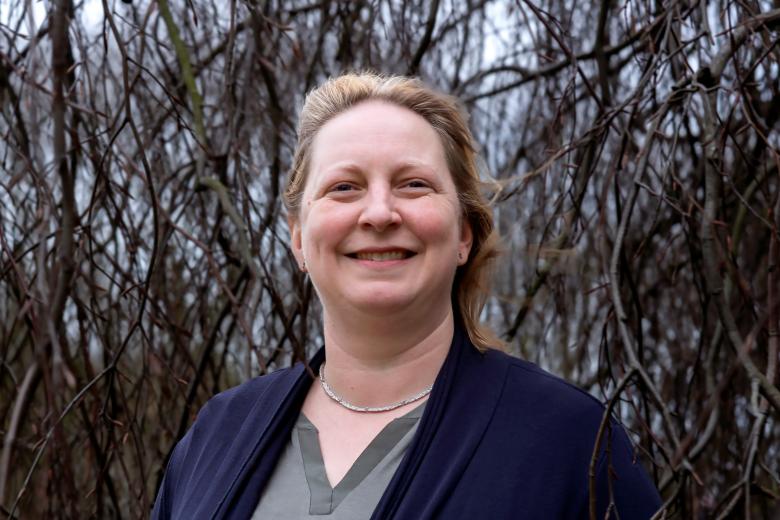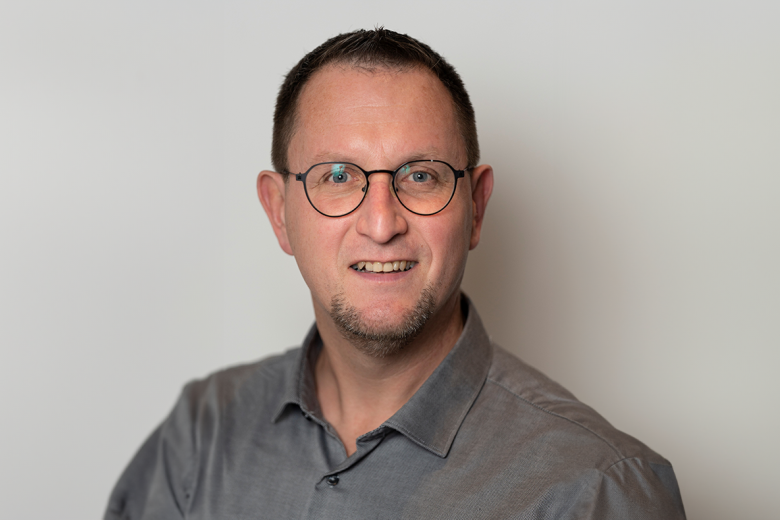Vegetables and fruit are healthy. And we're going to prove it.
Hidde van Steenwijk, a former pharmacy student, became fascinated by the health effects of vegetables and fruit and is now a PhD student at Campus Venlo's 'Food Claims Centre Venlo' (FCCV). Within the Dutch government’s top-sector project 'The Value(s) of Vegetables and Fruit' he will be working on an innovative challenge model over the next four years through which he hopes to scientifically demonstrate the health benefits of fruit and vegetables. And it is needed. We all know that fruit and vegetables are healthy, but at the same time only a quarter of all children and 16% of adults meet the recommended daily requirements. If the positive health effects are actually proven, there is a huge potential benefit. By the way, did you know it is better to steam broccoli than boil it? And that you should eat tomatoes regularly because they contain a substance that can prevent the development of diseases of affluence?
Van Steenwijk explains, "With the challenge model we can hopefully look at causes and links between ingesting certain nutrients and health effects. We want to measure the multiple subtle health effects of different substances from fruit and vegetables. If we know how people can best prepare certain types of fruit and vegetables and in which combinations they should be eaten for optimal results, we can provide consumers with this advice. Additionally, we can assess the effects of anti-inflammatories and dietary supplements in the model."
Tomatoes
Van Steenwijk's search for interesting substances in fruit and vegetables has already yielded initial results. He has shown that lycopene, a substance found in tomatoes, can possibly predict the development of inflammation. This substance alone could therefore play an important role in the fight against diseases of affluence such as type 2 diabetes and cardiovascular diseases. "We see that patients with these diseases suffer from inflammation in the body even before they become ill. I dived into the literature on lycopene and it turned out to be mainly about the effects of the intake quantity of tomatoes. However, we wanted to look at what actually happens in the body when one consumes tomatoes. If you look in the blood of all kinds of patients, for example those with cancer, cardiovascular disease and diabetes, you can see that the lycopene concentrations in their blood are lower than in healthy people. That's strange, because these people don't necessarily eat fewer tomatoes. Lycopene can also be accessed through ketchup and pizza, for example. So, you see that the lycopene levels go down when you're ill. You could probably even turn it around and start using lycopene as an inflammatory marker; someone with a low lycopene level might be ill or is going to be."
Relationship
But there is another interesting result according to Van Steenwijk, "Intervention studies have been conducted in which people had to eat a certain number of tomatoes over a certain period of time or were given lycopene in the form of supplements. What you see is that the lycopene concentrations in those people do go up, but the inflammation markers don't go down right away. You might expect a health effect because of the link between lycopene and inflammation, but that's not the case. In other words, there is no point in eating large quantities of tomatoes in a short period of time to prevent the development of inflammation. However, consistently eating normal amounts of tomatoes does have an effect."
Basic concentrations
How can it be effectively demonstrated that people really need basic concentrations of substances such as antioxidants, lycopene, vitamins, etc.? "There are old studies, which would no longer be ethically possible, in which people were put on fruit and vegetable-free diets for four weeks. In healthy people, the lycopene concentrations were found to decrease as they simply couldn't get the substance. But at the same time, the inflammation markers went up. So, if one’s basic concentration levels decrease, it has a negative effect on the inflammatory markers. That's why you have to eat fruit and vegetables every day. There's no point in suddenly eating two kilos of tomatoes a day to prevent diabetes."
Synergy
Van Steenwijk secretly thinks it isn’t the widely acclaimed antioxidants that have enormous health benefits. He expects it to be a combination of substances in fruit and vegetables, "There are a lot of different substances in fruit and vegetables, for example pro-oxidants, which you'd actually think are harmful. It's all about synergy. If you have two substances, each with a little benefit, together they can strengthen each other’s positive effects. The intact nutrition matrix of fruits and vegetables can provide a synergistic environment which promotes the biological activity of phytonutrients (plant substances with medical properties). This interplay can probably work better than, for example, dietary supplements with antioxidants." Give an example of a substance that, in addition to antioxidants, is interesting for this possible synergy. "In addition to lycopene, my research is focused on the sulforaphane substance found mainly in broccoli. It’s a toxic substance that's not toxic in the quantities we ingest. What happens in the body when you ingest sulforaphane is that the substance triggers our body to make antioxidants of its own. In this way, there is a health benefit. You can partly compare it to physical activity. By exercising, you are actually doing damage to your body. But like pro-oxidants, by exercising you also create more oxidative stress. Your body overcompensates for this and that's how you get healthier."
Don’t boil broccoli
Luckily, the Dutch eat a lot of broccoli, right? "The funny thing is that Dutch people get very little sulforaphane because they usually boil broccoli. If they were to steam their broccoli at 70 degrees (and chew it well) that would be a good way to achieve health benefits. Sulforaphane is only formed thanks to a precursor substance that evolved to protect the plants from being consumed by animals or insects. If an animal eats the plant, it is damaged and an enzyme comes into contact with the precursor substance. That enzyme converts the precursor substance into sulforaphane. Insects and animals leave the plant alone because of this bitter-tasting substance. Therefore, chewing well is important because then the enzyme comes into contact with the precursor substance. Unfortunately, the enzyme that causes the conversion no longer works well at 100 degrees. So, if broccoli is boiled, much less sulforaphane is formed."
Health claims
Your research is of course very important for the producers of vegetables and fruit. "Yes, they are very keen to be able to make health claims, such as those mentioned on packages of fruit juice, dietary supplements, etc. But that's very difficult. It would be great if consumers knew that actual tomatoes are healthier than a bottle of tomato juice that says it contains vitamin C on its label. Because in addition to that vitamin C, there is sugar in the juice and many healthy substances from the intact food matrix have been filtered out, and people don't know that. With our research we want to help the fruit and vegetable farmers and ultimately the consumer. If my model can help with that, then of course that would be very nice. Ultimately, only such information can help strengthen consumer confidence and enable people to make more conscious and healthier choices."
Text: Margot Krijnen
Relevant links
Also read
-
DigiMach: Digital Transformation of the Machining Value Chain for Sustainable Growth
DigiMach is a transnational 3-year collaborative approach that will transform manufacturing across the Meuse-Rhine region by bringing AI, IoT, and robotics to small and medium-sized enterprises in the machining sector. The project will assist more than 150 SMEs to adopt smart, digital tools, through...
-
Working at UM: “a life-changing experience”
"I am proud that our new Circular Plastics group published its first completely in-house research," Kim Ragaert says. She founded the research group three years ago, when she moved to Maastricht. Her work has laid the foundations for many innovations in the field of plastic recycling, and she is...
-
How does the universe taste?
Gerco Onderwater investigates the flavour of the universe while guarding the flavour of the Maastricht Science Programme. On 31 May, during his inaugural lecture, he provided a pre-taste of his work in Maastricht.